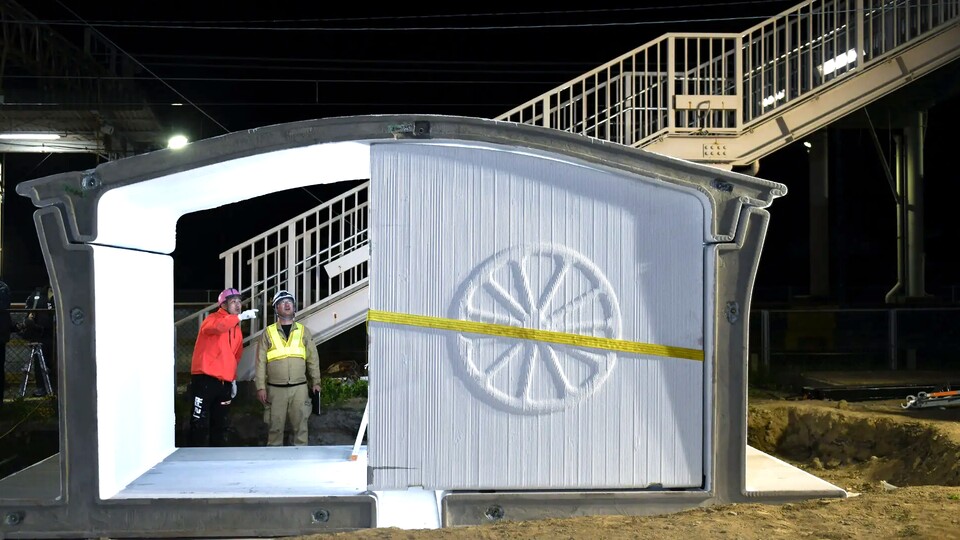
It is about a very small building, but the foundations of which were quickly built up. (Image: nytimes.com)
Building a train station is nothing, then you can do it overnight. This also applies to the interesting project from Japan that is about this.
Finally, in addition to tracks, platforms and the corresponding connecting paths, you also imagine a station house of a certain size as well as a suitable interior and the necessary infrastructure around it.
All of this was not set up in Japan at the end of March within six hours, but at least the foundations for a new station house. Interesting that from a technical point of view primarily because these walls came from a 3D printer.
According to those responsible, it is the first ward building of the world of this kind. Where it is and more backgrounds, we are now taking a closer look on the basis of a report from the New York Times.
20:11
Until the trains explode! | Train Valley Origins with AK
The details of the building construction
The new building was built for the Hastushima station near the small town of Arida with 25,000 inhabitants. Only 530 passengers are served there every day.
So it is a very small train station. The renovation of such non -severely frequented stations often falls by the wayside in Japan, according to the New York Times.
Details on the structure and completion:
- The new building replaces an old wood old, which was built in 1943 and is much larger. It has only been automated since 2018.
- The foundation of the foundations from the 3D printer of the new building took place due to strict restrictions when building the last train in the evening and was done the next day before entering the first train.
- It should still take until July 2025 until the new building can be put into operation after the interior design including ticket machines.
- The pressure of the walls took place far from the location of the train station in the Kuramato Prefecture by the Serendix company. The components then had to be transported about 800 kilometers.
The following video on YouTube shows what the whole thing looks like:
Link to the YouTube content
Where is the advantage?
The makers see them especially in the significantly lower personnel. Without a 3D printer, the construction would also have taken two months and the costs would have been twice as high, according to the West Japan Railway Company.
In the future, further station houses from train stations or other buildings in remote areas could be implemented faster, both with a view to the construction period and with regard to other temporal hurdles in implementation.
Until complete train stations or station houses are built in significantly larger dimensions, but should still go into the country for some time.




 You can get the hardest horror hit of 2025 cheaply on Black Friday
You can get the hardest horror hit of 2025 cheaply on Black Friday Automatic feeders, fountains and the like are now heavily discounted on Amazon Black Friday!
Automatic feeders, fountains and the like are now heavily discounted on Amazon Black Friday! Inexpensive 3D printer for beginners in the Black Friday offer – top functions at a truly bargain price
Inexpensive 3D printer for beginners in the Black Friday offer – top functions at a truly bargain price Have you ever wanted to play as a ghost vampire? On Switch and PS5 you can become the coolest hero ever for cheap!
Have you ever wanted to play as a ghost vampire? On Switch and PS5 you can become the coolest hero ever for cheap! Here is the Amiga 1200 Maxi instead of Mini
Here is the Amiga 1200 Maxi instead of Mini